Forget love and romance, let’s do something eerie in Paris. If you are a fan of all things clandestine and eerie like us then you would want to visit Paris’ Empire of Death, the Catacombs of Paris. For those who don’t know, the Catacombs are a mile-long underground necropolis, serving as a tomb and macabre memento mori. The Catacombs of Paris are an alternative world where darkness rules and silence prevail. They are one of the top tourist destinations in Paris and allow you to step down into hundreds of years of history, engulfing you in a bubble of allure and astonishment. Let’s explore the Catacombs of Paris together and delve into 200 years worth of history.
The Catacombs of Paris – A Quick Glance
The Catacombs of Paris – Overview
History of the Catacombs of Paris
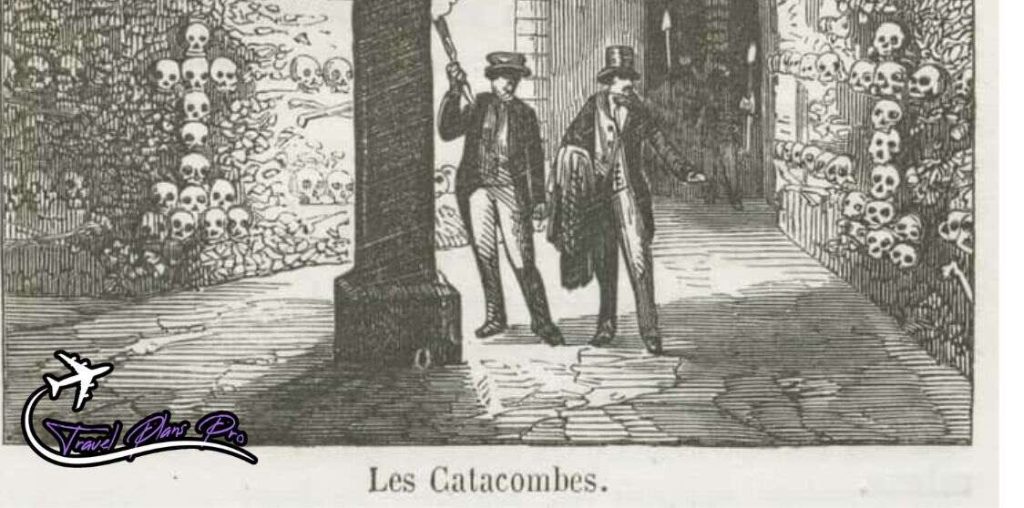
The Catacombs of Paris carry with them a fascinating history that leaves you open-mouthed and befuddled. In the olden days, these Catacombs began as ancient underground quarries. During the 12th century when the building of Norte Dame and the Louvre began, the demand for stone increased. Therefore, to acquire stone, workers dug underground, so the topsoil, vital for farming, won’t be disturbed. The quarries were located outside of town during the initial days of mining. However, over the centuries in order to meet the increasing demands, the limestone quarries extended.
Estimates show that today about 10% of the city of Paris sits atop an underground quarry. Even today, when a person purchases a house in the city they are entitled to know if it was built atop the quarries.
Coming back to the history of the Catacombs of Paris. As the demand for stone increased, the quarry workers toiled away in harsh and unforgivable conditions. Most of the poor souls went blind due to inadequate lighting in the tunnels. As it was easy to lose perception of time and orientation, many workers also got lost in the maze of tunnels. To combat this problem, streets were made in the quarries, and were given the names that corresponded to the streets on the ground above.
Since then, Paris has been redesigned countless times and the streets in the quarries are now akin to ghost streets, depicting an identical carbon copy of 18th-century Paris. When a quarry tapped out, it was abandoned, left to rot away as time and dates progressed. People started to construct houses atop the abandoned tunnels. However, the quarries made for a shaky building foundation and caused an accident in 1774, when not being able to bear the weight of the buildings, a sinkhole formed in Hell Street that took down houses as well as people.
The worried authorities closed the quarries permanently in 1776 and hired Antoine Dupont with the task of mapping out and stabilizing the underground space by erecting piers and support walls. The nature of the task was so formidable that Antoine created a Quarry Inspection Unit that was run by Axel Guillaumot, who later became known as the “man who saved Paris.” Axel was given authority to fill in open spaces of the quarries and build an elaborate network of tunnels that would allow for repair work and regular inspections.
The interventions are operational even today and the last sinkhole was reported in 1961. And even though the modern-day inspectors have better knowledge of the tunnels they still sometimes stumble upon undiscovered places.
You might be wondering about the ossuaries of bones. Wonder no more as we are about to tell you. Paris’ only crisis weren’t the sinkholes, it was also facing a horrific sanitation problem that was putting the health of citizens at risk. Now, the average life expectancy at that time was only 20 years old, and Paris was getting filled with bodies with no place to bury them. Parisians had to resort to stacking up the bodies in graveyards and cemeteries, which ended up poisoning the air with bacteria. Oh, Paris! They won’t let you heave a sigh of relief, won’t they?
Responding to the public health crisis, the French Government shut down and evacuated the city cemeteries. In 1785, they began transferring the bones from the cemeteries to the old underground quarries and the transfers continued till 1859. The bones were transferred at night to avoid public outcry. The bones were subjected to scrupulous ritualisation. Priests led ceremonial processions of black-veiled bone-laden carts into the quarries and during transfer, requiems were sung.
The transfer was completed by placing a plaque that indicated the district and church from where the bones came from and their date of arrival. At the beginning of the year 1809, the Catacombs of Paris welcomed the wealthy elite by appointment. In the following years, they were opened to the general public and have now become one of the must-see places in Paris. Until 1987, visits to the Catacombs of Paris were by candlelight, however, electricity was soon installed.
Napoleon was truly the one who transformed the underground tunnels turning them into a tourist attraction. He hired numerous people who were given the task of redecorating bones that lay in large piles. Upon his orders the walls of the Catacombs of Paris were lined with skulls, femurs, and tibias, macabre quotations were engraved on stones, and some bones were arranged in the shape of hearts and circles.
The Catacombs of Paris are also the burial spot of many famous Parisians like Maximillian de Robespierre, Jean-Paul Marat, Charles Perrault, Jean de La Fontaine, Nicolas Fouquet, as well as the 1343 people who were guillotined during the Reign of Terror at the Place de la Concorde. Among the guillotined were also King Louis XVI and Marie Antoinette. May believe that the ghost of Marie Antoinette haunts the Catacombs of Paris.
Catacombs of Paris – Tickets and Tours
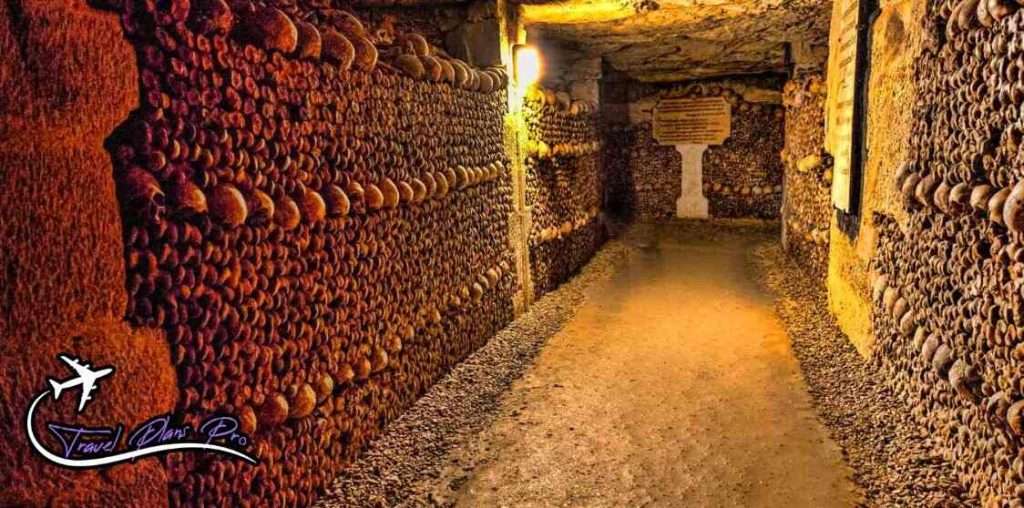
To prevent damage to bones only 200 people are allowed inside the Catacombs at a single time, with the faculty tracking the visitors assiduously. Due to the site’s popularity and 200-person restriction, the tickets tend to sell out quite quickly. Given below is a summary of the price of entry to the Catacombs of Paris.
- Full rate + audio guide: 29€
- Reduced rate + audio guide: 23€
- Child rate (5 to 17): 10€ (no audio guide)
- Children under 5: free admission
- Audioguide: 5€
The reduced rate applies only to students, holders of Paris Pass Famille, 18- to 26-year-old and members of la Sauvegarde de l’Art Français, la Société de l’Histoire de l’Art Français, la Société francaise d’archéologie, la Société nationale des Antiquaires de France. Also, keep in mind that the audio guide provided by the Catacombs of Paris will be French, they don’t offer tours in English. However, you can book a tour guide via Get Your Guide, who will not only give you a guided tour of the Catacombs of Paris in English but will also help you move around the city seamlessly.
Walking on Lime and Stone – Catacombs of Paris Guide
There are two parts of Catacombs of Paris, the quarries, and the ossuary, that you can visit. If you opt for a guided tour, they will also show you around some restricted areas in the quarries. When you step foot in the establishment (above the ground) you will be met with a series of informative placards, explaining the history of the Catacombs of Paris. As you descend the 130-step spiral staircase you will begin your journey to the bony underworld that lies 60 feet underground.
Upon reaching the ossuary a sign saying “Halt, this is the empire of the dead” will greet you. As you walk on limestone floors and emerge on the other side you will witness the following attractions:
The Negative of Paris
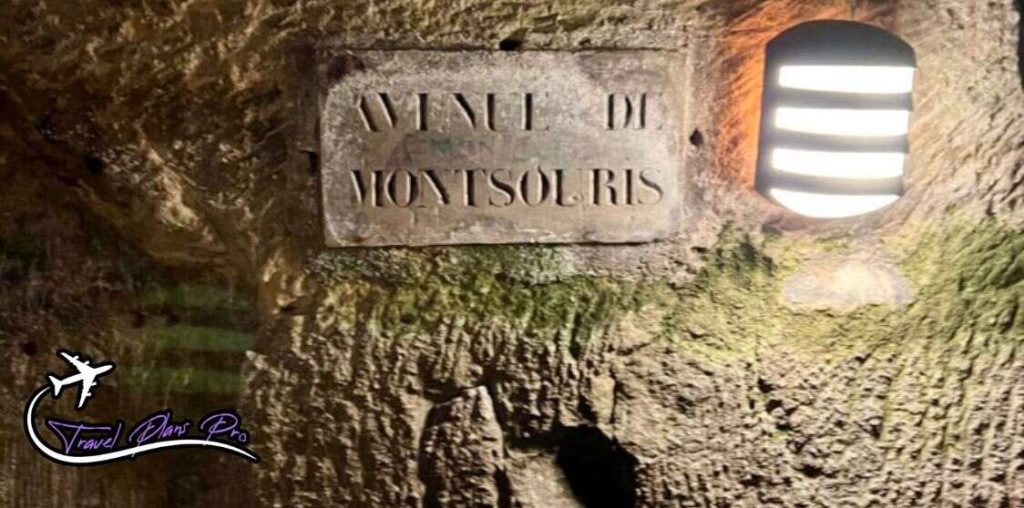
As you walk along the narrow and dark corridors of the Catacombs of Paris, you will come across various signs and a black tar line on the ceiling, marking which way to go. The signs referred to as the “negative” of Paris, indicate the names of the Parisian streets you are under, many of which don’t exist. You will also find the initials and years of service of the engineers and architects who were part of the Quarry Inspection Department
Stone Masonry Workshop
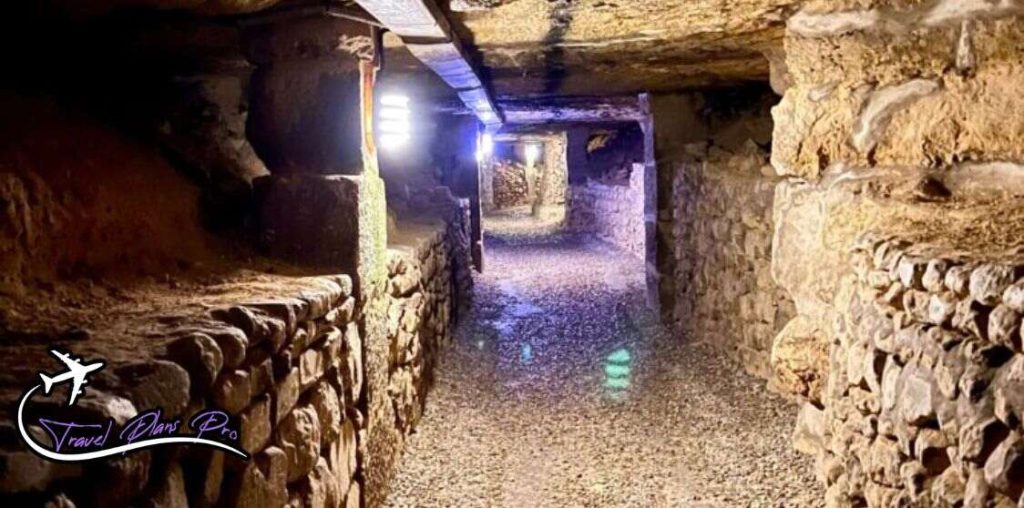
The part of the Catacombs called the “workshop” or “atelier” dates back to the Middle Ages. There, two pillars hold up the ceiling that were put in place by sheer human force. The workshop depicts how the quarrymen used the hagues et bourrages quarrying technique.
Decure Sculptures
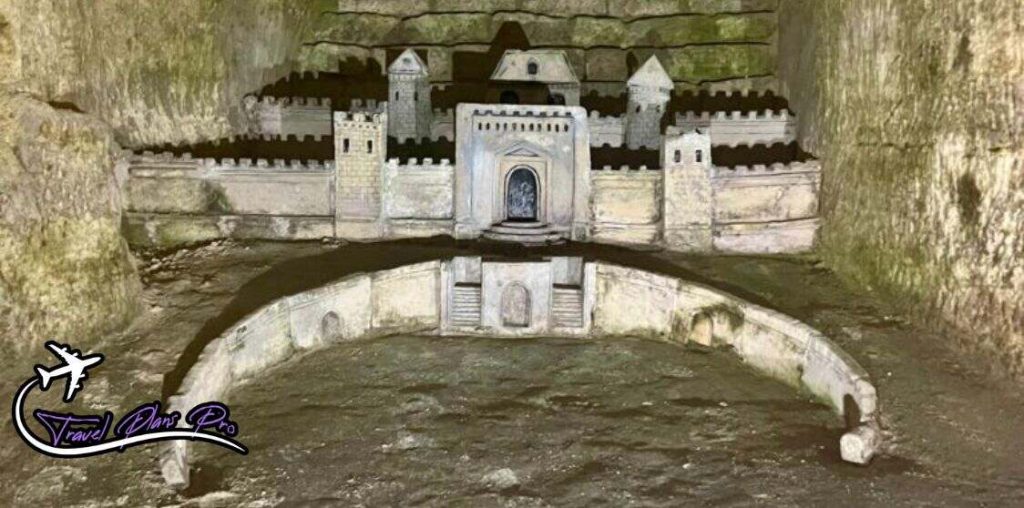
If you opt for a guided tour, you will be taken to a restricted lower level where you will witness the two sculptures made by a member of the Quarry Inspection Unit named Decure. Decure worked on the sculptures from 1771 to 1782 with the first one representing the windmills in Minorca and the second one, a more elaborate one, representing the citadel of Port Maho in Minorca.
The Quarryman’s Foot Bath
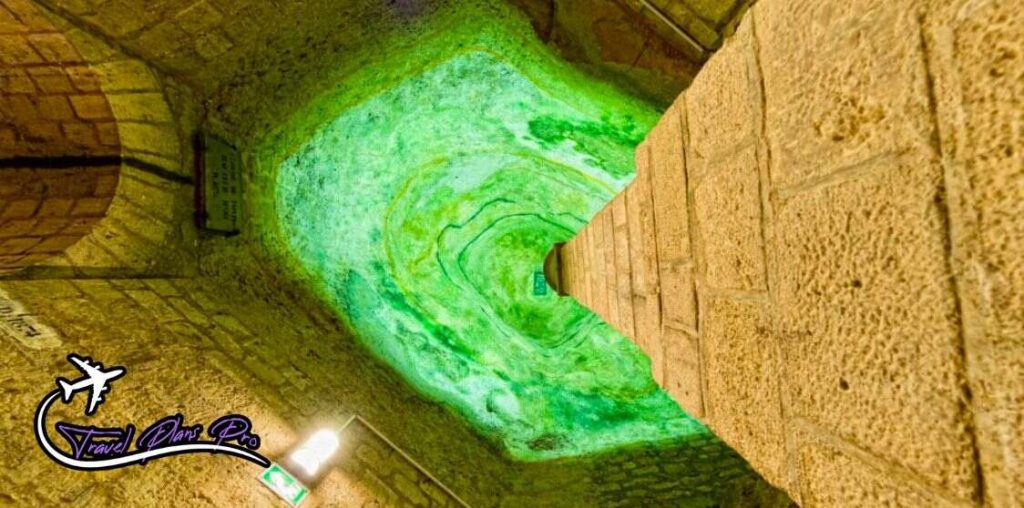
In the Catacombs of Paris lies a water well that was the first geological drill used in Paris. The area got its name from the fact that the water there is so clear that one can only detect it by stepping into it.
Crossroads
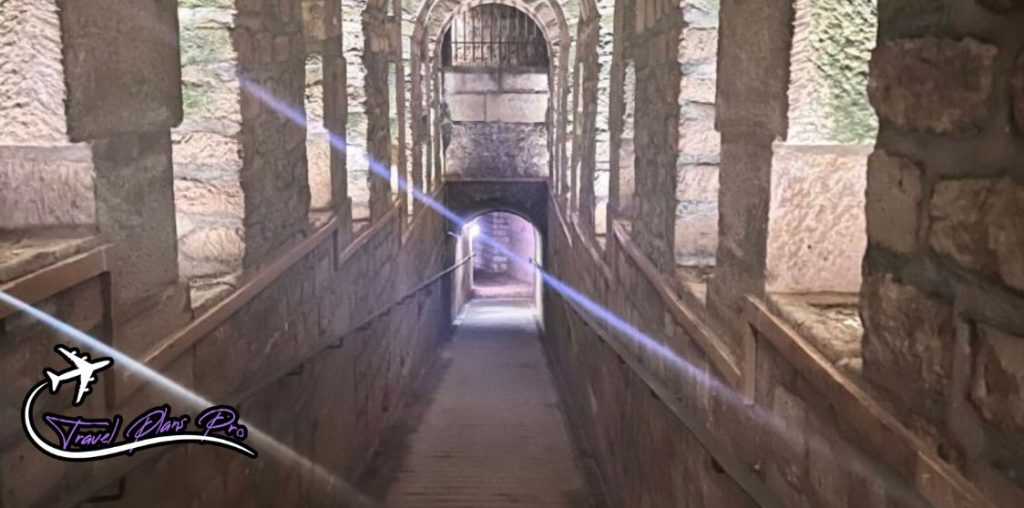
When the Ossuary was created in the 18th century, a steep ramp that connects the upper and lower Catacombs of Paris was installed.
Ossuary
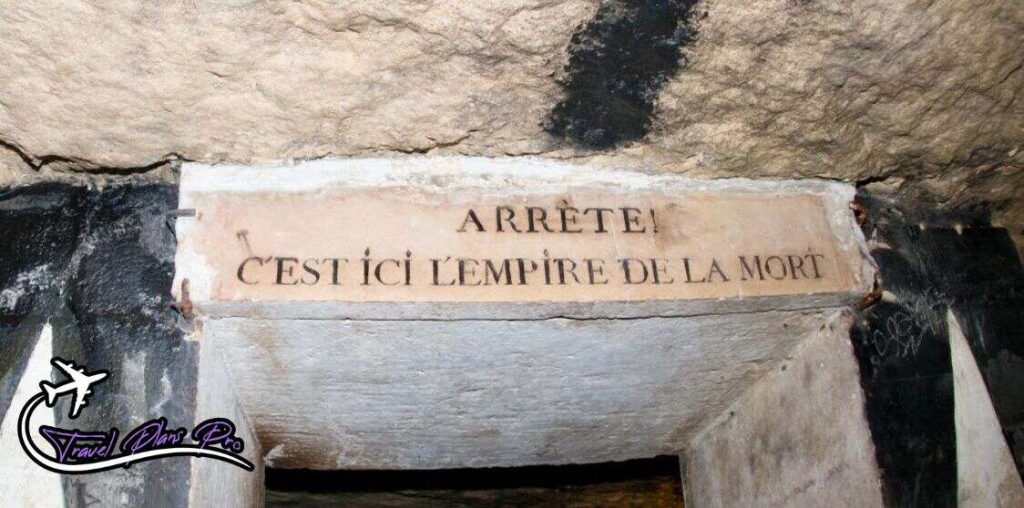
Your next stop is the Catacombs’ pièce de résistance, the Ossuary. When entering the Ossuary, a sign saying “Stop, this is the empire of the dead” will stop you in your tracks. After you have collected your bearings, you will venture into the realm where the remains of millions of Parisians are preserved. As if mandating respect, a lintel forces the visitors to bend down.
One side of the Ossuary is engraved with the words Memoriae mojorum, which translates to in the memory of ancestors. While the opposite side caveats that “However thou enterest, Death shodow-like will follow thy every step”. As you walk down the ossuary you will be surrounded by walls of bones on both sides with your guide telling you the difference between male and female skulls.
You will also be able to identify people who passed away due to leprosy or syphilis. As you move further you will come across a rare religious symbol, the Croix de Bordeaux, a stone cross. The next monument in the Catacombs of Paris that you will encounter will be the Smartian Fountain from the bible verse promising water to all. The quarrymen however inverted the verse, warning that if you do happen to drink from the fountain you will be thirsty till eternity.
Several other attractions that you will come across in the Catacombs of Paris include the Alter for Mass, Gilbert’s Tomb, Imitation Pillar, Le Mierre’s Gallery, French Revolution tomb monument, Crypt of Passion of Christ, and the Barrel.
Tips for Visiting the Catacombs of Paris
- As the Catacombs of Paris are below ground, the temperature is quite cold, so make sure to bring a jacket with you no matter how hot the world above is.
- You cannot under any circumstances touch the bones as they are quite fragile. Neither can you take the bones as that would be considered an act of theft, you can however buy a skill mug from the gift shop.
- Also if you have a backpack, wear it in front to avoid bumping into bones.
- Large backpacks and luggage aren’t allowed.
- You are allowed to take photos but without a flash.
- Make sure to wear comfortable shoes as the paths are uneven and pebbly.
Top 10 Parisian Dishes to Try on Your Visit to the City of Light
If all that walking in the Catacombs of Paris made you hungry you can check out the top 10 Parisian dishes that the City of Love has to offer. Read our article to know what these dishes are and where you can find them.

